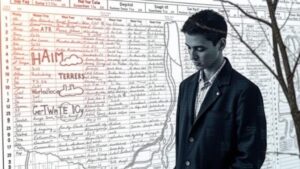Mapping the Footprint of Historic Refugee Camps for Hidden Relics
Mapping the Footprint of Historic Refugee Camps for Hidden Relics
The study of historic refugee camps is crucial not only for understanding the past challenges of displacement but also for uncovering hidden relics that bear witness to the survival and resilience of displaced populations. This article examines the methodologies used in mapping these locations, the significance of the hidden relics that may be found within them, and the broader implications for heritage conservation and social history.
Introduction
Refugee camps have long been established during periods of conflict, natural disasters, or political upheaval. These sites serve as temporary homes for displaced individuals, but they are also repositories of significant cultural and historical artifacts. Mapping their footprints offers a valuable tool for historians, archaeologists, and practitioners in humanitarian fields to document and preserve the legacy of these social phenomena.
Historical Context of Refugee Camps
Throughout the 20th and 21st centuries, numerous significant refugee camps have existed, including:
- GianGali Refugee Camp, which housed over 60,000 individuals fleeing the Rwandan Genocide in 1994.
- Gaza Strip camps established in the late 1940s for Palestinian refugees, which continue to this day.
- Various camps established during the Syrian Civil War, with some facilities accommodating tens of thousands of displaced persons since 2011.
The historical contexts surrounding these camps reveal important insights into the lives of the refugees, the geopolitical conditions necessitating their creation, and the long-lasting legacies of such structures.
Methodologies for Mapping Historic Refugee Camps
Mapping the footprints of historic refugee camps involves various techniques, which include:
- Geographic Information Systems (GIS): GIS technology is critical for visualizing spatial data related to camp locations. For example, using satellite imagery to analyze the GianGali camp footprint has enabled researchers to track changes in land use over time.
- Remote Sensing: This technique involves collecting data from aerial or satellite images. For example, remote sensing was used to identify the remains of abandoned camps in the Balkans, many of which exist today as unmarked sites.
- Archaeological Surveys: Ground surveys are useful for uncovering material evidence. In camps, items such as personal belongings, tools, and remnants of temporary shelters can provide insight into the daily lives of residents.
The Significance of Hidden Relics
Hidden relics found in refugee camps can take various forms, including:
- Personal Artifacts: Items such as toys, clothing, and photographs often retain emotional value and can narrate individual stories of displacement.
- Structural Remains: The architecture of makeshift shelters can reflect traditional building techniques adapted to hastily arranged living conditions.
- Community Artifacts: Artworks or communal projects, such as murals representing the experiences of refugees, can convey cultural narratives and resilience.
These relics not only serve as tangible links to the past but also provide critical data points for understanding collective memory and identity within displaced communities.
Case Studies
Several prominent examples illustrate the successful mapping of historic refugee camps and the retrieval of hidden relics:
- The Zaatari Camp in Jordan: Established in 2012 amid the Syrian Civil War, Zaatari has been mapped using both GIS and interviews with former residents. Many artifacts, such as childrens schoolwork and community artwork, provide insight into life within the camp.
- UNHCR Initiatives in Africa: The United Nations High Commissioner for Refugees (UNHCR) has undertaken mapping projects in various African nations that faced significant refugee influxes. This led to the recovery of numerous indigenous artifacts, enhancing cultural preservation efforts.
Challenges of Mapping Refugee Camps
Despite the benefits, there are notable challenges associated with mapping historic refugee camps:
- Access and Security: Many camps, particularly in conflict zones, are difficult to access due to ongoing hostilities, which can hinder thorough surveying efforts.
- Ethical Considerations: The ethical implications of documenting personal histories and artifacts must be addressed. Consent from affected communities is essential to navigate these delicate matters.
Conclusion
Mapping the footprints of historic refugee camps serves as an essential pursuit in uncovering and preserving the narrative of human displacement. The relics found within them are more than just remnants; they are markers of survival, culture, and community resilience. As scholars and practitioners continue to develop innovative methodologies, such as GIS and remote sensing, the potential for meaningful engagement with these sites is both exciting and imperative. Undertaking this work responsibly, with a focus on ethical practices and community involvement, ensures that the histories associated with these spaces are honored and remembered.
Actionable Takeaways
For those interested in engaging with the subject matter further, consider the following:
- Participate in community-based archaeological projects in areas with significant refugee histories.
- Familiarize yourself with GIS software to better understand its practical applications in mapping historical sites.
- Engage with literature on refugee studies, history, and anthropology to broaden your perspective on displacement and its impacts.
